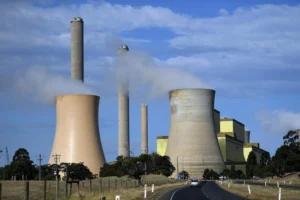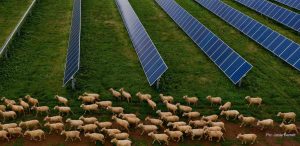The battle for control of Australia’s medium-scale power stations, most of which use renewable energy technologies, will play out for a few more months, with the Australian Energy Market Commission giving itself more time to consider potential reforms that could see AEMO centralise the control of solar farms as small as 5MW.
The AEMC is currently considering a rule change request instigated by the Australian Energy Council, creating a situation where the body that represents Australia’s largest power stations wants generators as small as 5MW to play by the same rules and become required to come under the centralised control of the Australian Energy Market Operator.
The rule change would see smaller generators, many of which will be medium-scale solar farms, to register and participate in National Electricity Market alongside large-scale thermal power stations, including the central dispatching process for electricity generators, with system operators exerting more control over their operation.
Currently, it is only mandatory for generators above 30MW in capacity to participate in the National Electricity Market, with this threshold generally ensuring it is only truly large-scale projects that are required to participate in the centralised control processes, an expensive process.
It is not mandatory for generators below 30MW to participate and bid directly into the wholesale energy market. In most cases, smaller generators instead operate as ’embedded generators’ with no centralised controls around when and how they can dispatch.
However, as the number of commercial-scale solar installations has grown, larger energy market incumbents have called on the smaller generators, between 5MW and 30MW, to be brought into the wholesale energy market, ensuring they are subject to greater controls imposed by dispatch instructions.
The Australian Energy Council, which represents the largest incumbent energy companies, has lodged a rule change request seeking to implement these changes with the AEMC, saying in its request that AEMO should have greater control over the operation of smaller generators.
“The power system is moving to one characterised by progressively smaller unit sizes, and also more greatly affected by variations in supply and demand,” the Australian Energy Council’s rule change request says.
“To maintain both the proper control of the power system and the efficient operation of the market, AEMO’s ability to dispatch plant needs to extend to reach these smaller units and therefore the size limit of 30MW for scheduled generation is no longer appropriate.”
“The Energy Council believes that reducing the size threshold for scheduled generation will assist AEMO in controlling the power system, ensure power system security and reliability, and assist the market, through the availability of more accurate forecasting information and more accurate price setting processes.”
South Australia, which has the greatest proportion of small generators, supports the AEC move. So too does AEMO, which is also looking to exert more control over rooftop solar as it seeks the tools to manage the rapid shift to distributed, rather than centralised, energy.
However, the proposed rules have been opposed by representatives of smaller generators, which have argued that the AEC’s proposal would deliver little by way of actual improvements to the energy system, but would place a major burden on the owners of smaller solar farms that never anticipated needing to become an active energy market participant.
These requirements prompted the Public Interest Advocacy Centre (PIAC) to express its opposition to the proposed rule change, saying that forcing smaller generators to participate in the same market as Australia’s largest power stations would place onerous costs on comparatively small distributed energy projects.
“PIAC does not support the rule change proposal. We consider it will not deliver net benefits to consumers or pass the AEMC’s assessment framework, in particular failing, on balance, to promote efficient investment and minimise administrative and regulatory burden,” PIAC told the AEMC.
“If this proposed change were implemented, generators that would otherwise have been unscheduled would incur significant new capital and operating costs associated with installing and operating additional systems for market interfaces and SCADA, and face increased exposure to risk.”
The Clean Energy Council echoed these sentiments, saying that the AEMC should not rush to impose new registration requirements which will predominantly be imposed on smaller solar generators while acknowledging the need to manage the growing proportion of the energy system served by smaller generators.
“It is important to note that if the registration threshold decreases, smaller generators will be captured and subject to the requirements of the registration category they fall in to,” the Clean Energy Council said.
“For some of these businesses, participating in the energy market will not be core business activity and may present a new and difficult challenge. The CEC suggests, to the extent possible, AEMO consider ways to improve and streamline the registration and participation process for these participants to minimise the burden placed on them.”
Sun Metals, which operates a 125MW solar farm at the site of its Queensland zine refinery, said that the company did not believe the proposed rule change would contribute to achieving the objectives of the national electricity rules.
“The costs of making the changes contemplated… are likely to be far larger than is quantifiable, as a significant proportion of cost will manifest in disruption to well established operational and business processes, outside of the electricity supply system,” Sun Metals said in a submission to the AEMC.
“Ultimately these costs will result in trade-offs to employment and economic activity. [Sun Metals] does not believe the AEC has adequately considered these factors in the justification for their rule change.”
There was some support for moving the threshold below 30MW, but most argue that placing the burden on generators as small as 5MW would cripple their business plans.
Given the complexities raised in submissions to the AEMC’s decisions, the AEMC has sought more time to consider the rule changes and the submissions that it has received, opting to extend the timeframe for making a draft determination on the rule change to 24 June.










